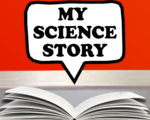
Storytelling and other 3MT Strategies
Jan. 28, 2018
The three minute thesis (3MT) competition is an excellent exercise for practicing communication skills. In this competition, the student has one static slide and three minutes to present the essence and impact of their research.
The 3MT is kind of like the elevator pitch that I make students practice and present in my professional development course. I challenge students to imagine themselves in an elevator with Elon Musk (CEO of Tesla Motors) when he asks you what you do. What an opportunity! Perhaps if you interest him, he might want to hire you or better yet join your initiative. How would you answer? Because of nervousness it’s a good idea to prepare one in advance.
The idea behind the elevator pitch and the 3MT is to present your work in plain language, not to over simplify it, but to make it accessible to people from all backgrounds. Since academics use a lot of jargon, this is more difficult than it seems. In the elevator pitch, students learn to draw people like Mr. Musk to their work. It starts with a high level (i.e. 30,000 foot) statement like mine: “I’m helping to cure degenerative diseases using stem cells.” If it’s an interesting statement, you will draw Mr. Musk in and he will ask for more, as you take him step-by-step to your level. If you bore him with details and jargon, his eyes will likely glaze over.
The inverse triangle approach is also commonly used in 3MT. However, the approach can be tricky to present to a lay audience. How do you avoid the jargon? How do you explain the difficult concepts in such a short period of time? Experts suggest that you can use analogies and storytelling. It is sometimes easier to illustrate an abstract concept by comparing it to something concrete or grounded.
An analogy is a short story. It conjures up imagery in the audience. In the example above, I use Elon Musk as the exemplar because his name conjures up imagery (He’s famous, he’s rich, he’s innovative, etc.) Because it’s grounded in pop culture, students connect more quickly and understand the importance of the exercise. However, the messaging is that students need to be prepared to answer anyone’s question, because you never know what opportunity it can lead to.
Another tip I like to tell my students is to present an anchor story or statement. My students must present a small business concept based upon their specific skillset. However rather than presenting a complicated storyboard, I make them present a logo to describe the essence of their business idea. As a part-time autism caregiver, Jessica Krahn’s anchor story was that she wanted to solve a common problem that Calgary families experienced, coordination of caregiving. Because of the personal connection, her story drew me in. It triggered emotion and empathy. I wanted to help. This is a good strategy for 3MT.
What about the PowerPoint slide? Basically, I believe that PowerPoint is a crutch and that you are better off presenting imagery orally than in a single slide. The best keynote presentation that I ever gave was when the IT people couldn’t figure out why my PowerPoint presentation wasn’t being projected. Thankfully I had the slides on my monitor. After getting over my nerves, I had to describe my data with imagery. I suggest that you do the same, rather than be distracted with data on a single slide. I like Jessica Dubin’s idea of presenting a pop culture anchor on the slide.
The origin of the research presentation dates to the 17th century when Robert Boyle travelled around England demonstrating the inverse relationship between pressure and gas volume using an air pump. Its purpose was to persuade audiences about scientific concepts by attaining social proof. One way to attain social proof in your 3MT is to present a thesis statement followed by lines of evidence, be it anecdotal, from the literature, or from your experiments.
Also consider using Cialdini’s other five principles of persuasion:
Finally, we must talk about the elephant in the room. You will only succeed if you are “present”: Cast off your nerves and be the person you truly are. Use The Five P’s, plan, prepare, practice, positivity and presence, in preparation for this nerve racking event and have fun.
The Faculty of Graduate Studies has hosted the University of Calgary 3MT competition since 2013, including hosting the first Western Canada competition in 2015 as part of the selection meet for Canada’s National 3MT. The competition not only serves as a way for graduate students to practice their presentation skills, but also to shine a light on the vital importance of University of Calgary research for our communities and province. The reach of the 3MT is evident in the YouTube videos of our past winners, which have garnered over 20,000 views. Graduate students are encouraged to check out videos of past top-10 winners, as well as resources and workshops available through My GradSkills to learn more about effective and impactful presentation skills.

Storytelling and other 3MT Strategies